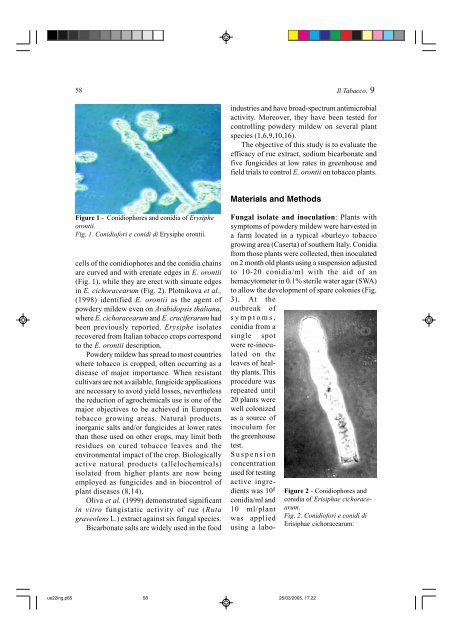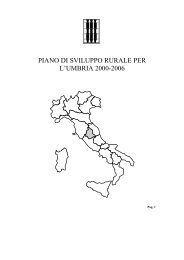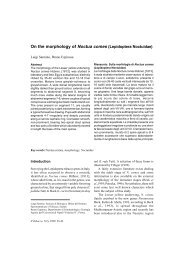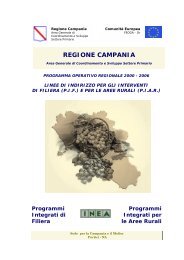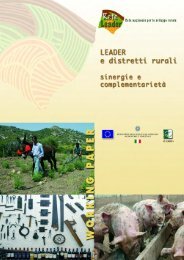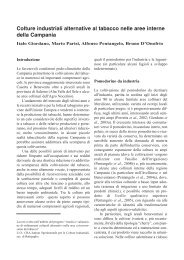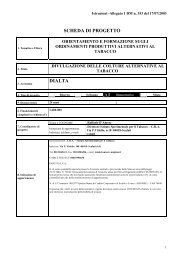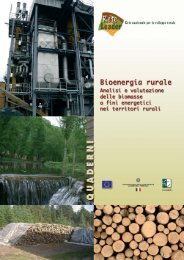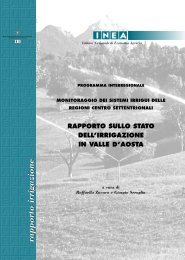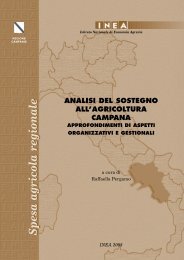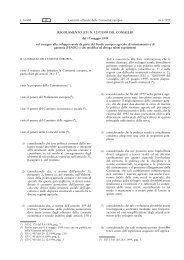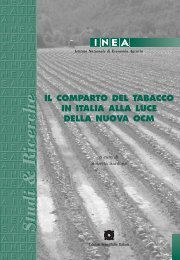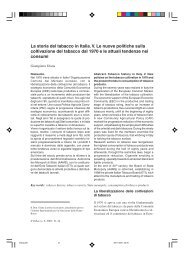Efficacy of rue extract, sodium bicarbonate and fungicides at ... - Inea
Efficacy of rue extract, sodium bicarbonate and fungicides at ... - Inea
Efficacy of rue extract, sodium bicarbonate and fungicides at ... - Inea
Create successful ePaper yourself
Turn your PDF publications into a flip-book with our unique Google optimized e-Paper software.
58Il Tabacco, 9industries <strong>and</strong> have broad-spectrum antimicrobialactivity. Moreover, they have been tested forcontrolling powdery mildew on several plantspecies (1,6,9,10,16).The objective <strong>of</strong> this study is to evalu<strong>at</strong>e theefficacy <strong>of</strong> <strong>rue</strong> <strong>extract</strong>, <strong>sodium</strong> <strong>bicarbon<strong>at</strong>e</strong> <strong>and</strong>five <strong>fungicides</strong> <strong>at</strong> low r<strong>at</strong>es in greenhouse <strong>and</strong>field trials to control E. orontii on tobacco plants.M<strong>at</strong>erials <strong>and</strong> MethodsFigure 1 - Conidiophores <strong>and</strong> conidia <strong>of</strong> Erysipheorontii.Fig. 1. Conidi<strong>of</strong>ori e conidi di Erysiphe orontii.cells <strong>of</strong> the conidiophores <strong>and</strong> the conidia chainsare curved <strong>and</strong> with cren<strong>at</strong>e edges in E. orontii(Fig. 1), while they are erect with sinu<strong>at</strong>e edgesin E. cichoracearum (Fig. 2). Plotnikova et al.,(1998) identified E. orontii as the agent <strong>of</strong>powdery mildew even on Arabidopsis thaliana,where E. cichoracearum <strong>and</strong> E. cruciferarum hadbeen previously reported. Erysiphe isol<strong>at</strong>esrecovered from Italian tobacco crops correspondto the E. orontii description.Powdery mildew has spread to most countrieswhere tobacco is cropped, <strong>of</strong>ten occurring as adisease <strong>of</strong> major importance. When resistantcultivars are not available, fungicide applic<strong>at</strong>ionsare necessary to avoid yield losses, neverthelessthe reduction <strong>of</strong> agrochemicals use is one <strong>of</strong> themajor objectives to be achieved in Europeantobacco growing areas. N<strong>at</strong>ural products,inorganic salts <strong>and</strong>/or <strong>fungicides</strong> <strong>at</strong> lower r<strong>at</strong>esthan those used on other crops, may limit bothresidues on cured tobacco leaves <strong>and</strong> theenvironmental impact <strong>of</strong> the crop. Biologicallyactive n<strong>at</strong>ural products (allelochemicals)isol<strong>at</strong>ed from higher plants are now beingemployed as <strong>fungicides</strong> <strong>and</strong> in biocontrol <strong>of</strong>plant diseases (8,14).Oliva et al. (1999) demonstr<strong>at</strong>ed significantin vitro fungist<strong>at</strong>ic activity <strong>of</strong> <strong>rue</strong> (Rutagraveolens L.) <strong>extract</strong> against six fungal species.Bicarbon<strong>at</strong>e salts are widely used in the foodFungal isol<strong>at</strong>e <strong>and</strong> inocul<strong>at</strong>ion: Plants withsymptoms <strong>of</strong> powdery mildew were harvested ina farm loc<strong>at</strong>ed in a typical «burley» tobaccogrowing area (Caserta) <strong>of</strong> southern Italy. Conidiafrom those plants were collected, then inocul<strong>at</strong>edon 2 month old plants using a suspension adjustedto 10-20 conidia/ml with the aid <strong>of</strong> anhemacytometer in 0.1% sterile w<strong>at</strong>er agar (SWA)to allow the development <strong>of</strong> spare colonies (Fig.3). At theoutbreak <strong>of</strong>symptoms,conidia from asingle spotwere re-inocul<strong>at</strong>edon theleaves <strong>of</strong> healthyplants. Thisprocedure wasrepe<strong>at</strong>ed until20 plants werewell colonizedas a source <strong>of</strong>inoculum forthe greenhousetest.Suspensionconcentr<strong>at</strong>ionused for testingactive ingredientswas 10 5conidia/ml <strong>and</strong>10 ml/plantwas appliedusing a labo-Figure 2 - Conidiophores <strong>and</strong>conidia <strong>of</strong> Erisiphae cichoracearum.Fig. 2. Conidi<strong>of</strong>ori e conidi diErisiphae cichoracearum.ue22ing.p65 5825/03/2005, 17.22


